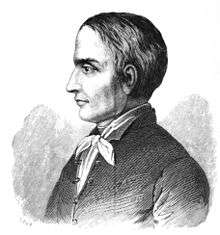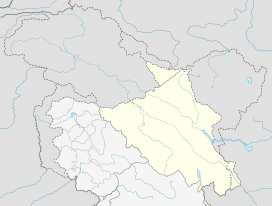Zangla Monastery
Current day Zangla Village has no monastery, only a nunnery. Zangla Palace is sometimes called Zangla Monastery due to a mistake made first probably by Tivadar Duka, biographer of Alexander Csoma de Kőrös, and later by Ervin Baktay, an Indologist who visited Zangla in 1928 to identify the locations related to Alexander Csoma de Kőrös, and suffering from malaria fever, described Zangla Palace - probably due to the Shrine and some monks living there - as a Monastery.
| Part of a series on |
| Tibetan Buddhism |
|---|
 |
|
|
|
Practices and attainment |
|
Institutional roles |
|
History and overview |
| Zangla Monastery | |
|---|---|
 Sándor Kőrösi Csoma who studied the Tibetan language at the monastery in 1823-4 | |
| Religion | |
| Affiliation | Tibetan Buddhism |
| Sect | Gelug |
| Location | |
| Location | Tsa-zar, Zanskar, Kargil district, Ladakh, India |
| Country | India |
 Location within India  Zangla Monastery (India) | |
| Geographic coordinates | 33°40′12″N 76°58′48″E |
Tsazar Monastery is a Buddhist monastery in the village of Tsa-zar, 6 kilometres from Zangla, Zanskar, Kargil district, Ladakh, northern India, formerly part of the Zangla Kingdom.
Tsazar Monastery is home to a few number of lamas and it has some notable wall paintings.
The Hungarian scholar Sándor Kőrösi Csoma edited the first Tibetan-English dictionary while living at Zangla Palace in 1823. The dictionary was published in 1824.[1]